
Synotin D Tablet
Manufacturer
Astonea Labs Private Limited
Salt Composition
Trypsin (48mg) + Bromelain (90mg) + Rutoside (100mg) + Diclofenac (50mg)
Key Information
Short Description
Synotin D Tablet is a pain relieving medicine used to reduce pain and inflammation in conditions like rheumatoid arthritis, ankylosing spondylitis, and osteoarthritis.
Dosage Form
Tablet
Introduction
Synotin D Tablet should be taken with food. This will prevent you from getting an upset stomach. You should take it regularly as advised by your doctor. Do not take more or use it for a longer duration than recommended by your doctor. Some of the common side effects of this medicine include nausea, vomiting, heartburn, diarrhea, loss of appetite, and indigestion. If any of these side effects bother you or do not go away with time, you should let your doctor know. Your doctor may help you with ways to reduce or prevent the side effects. The medicine may not be suitable for everybody. Before taking it, let your doctor know if you have any problems with your heart, kidneys, liver, or have stomach ulcers. To make sure it is safe for you, let your doctor know about all the other medicines you are taking. Pregnant and breastfeeding mothers should first consult their doctors before using this medicine.
Directions for Use
Take this medicine in the dose and duration as advised by your doctor. Swallow it as a whole. Do not chew, crush or break it. Synotin D Tablet is to be taken with food.
Safety Information
Side Effects
No common side effects listed.
Alcohol Warning
It is not known whether it is safe to consume alcohol with Synotin D Tablet. Please consult your doctor.
Breastfeeding Warning
Information regarding the use of Synotin D Tablet during breastfeeding is not available. Please consult your doctor.
Pregnancy Warning
Synotin D Tablet is unsafe to use during pregnancy as there is definite evidence of risk to the developing baby. However, the doctor may rarely prescribe it in some life-threatening situations if the benefits are more than the potential risks. Please consult your doctor.
How it works
Synotin D Tablet is a combination of four medicines: Trypsin, Bromelain, Rutoside and Diclofenac. Trypsin and Bromelain are enzymes. They increase blood supply and make the body produce substances that fight pain and swelling. Rutoside is an antioxidant which protects the body from damage by chemicals (free radicals) and further reduces swelling. Diclofenac is a non-steroidal anti-inflammatory drug (NSAID) which works by blocking the release of certain chemical messengers (prostaglandins) in the brain that cause pain and inflammation (redness and swelling).
Quick Tips
Take it with plenty of fluids Take it an hour before or two hours after a meal It may increase the severity of your condition at the start of treatment. Continue using it as prescribed by your doctor. It may cause dizziness and blurred vision. Do not drive or do anything requiring concentration until you know how it affects you. It may change the color, consistency, and odor of your stool. This is harmless. Inform your doctor if this bothers you.
Related Medicines
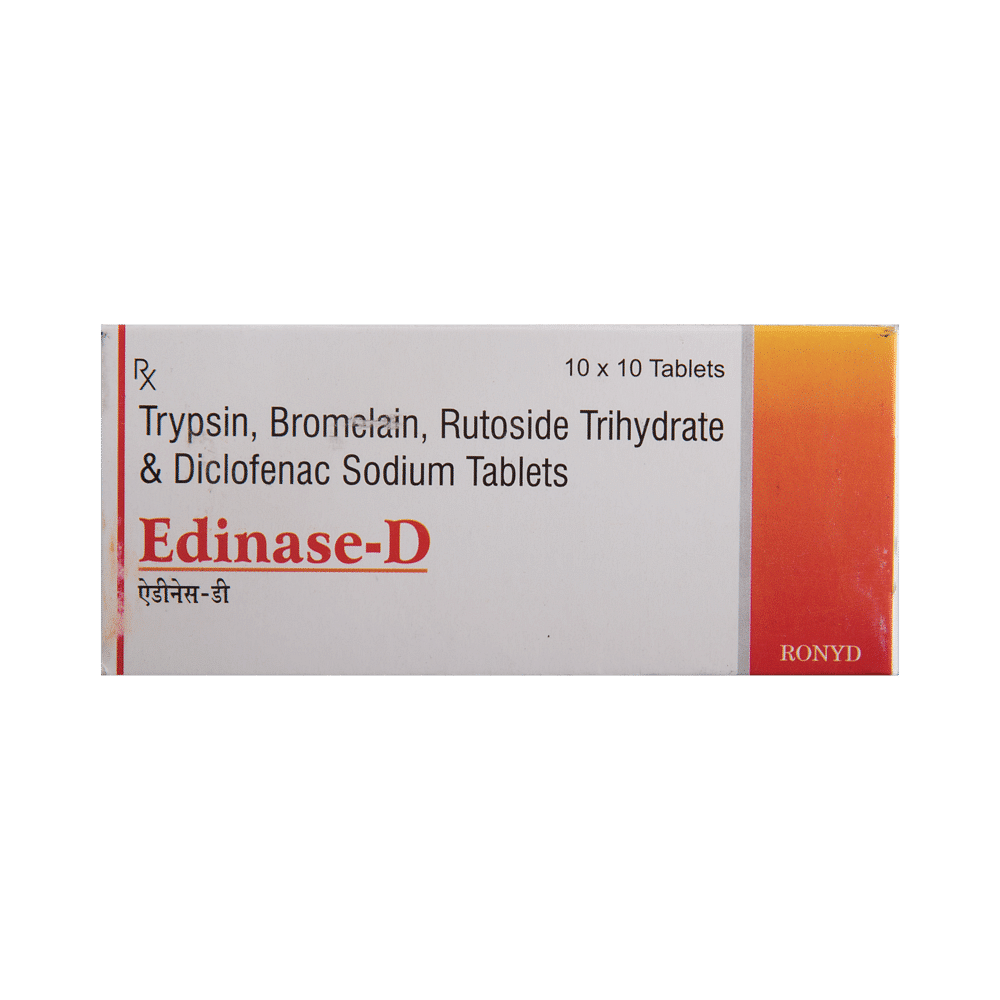
Edinase-D Tablet
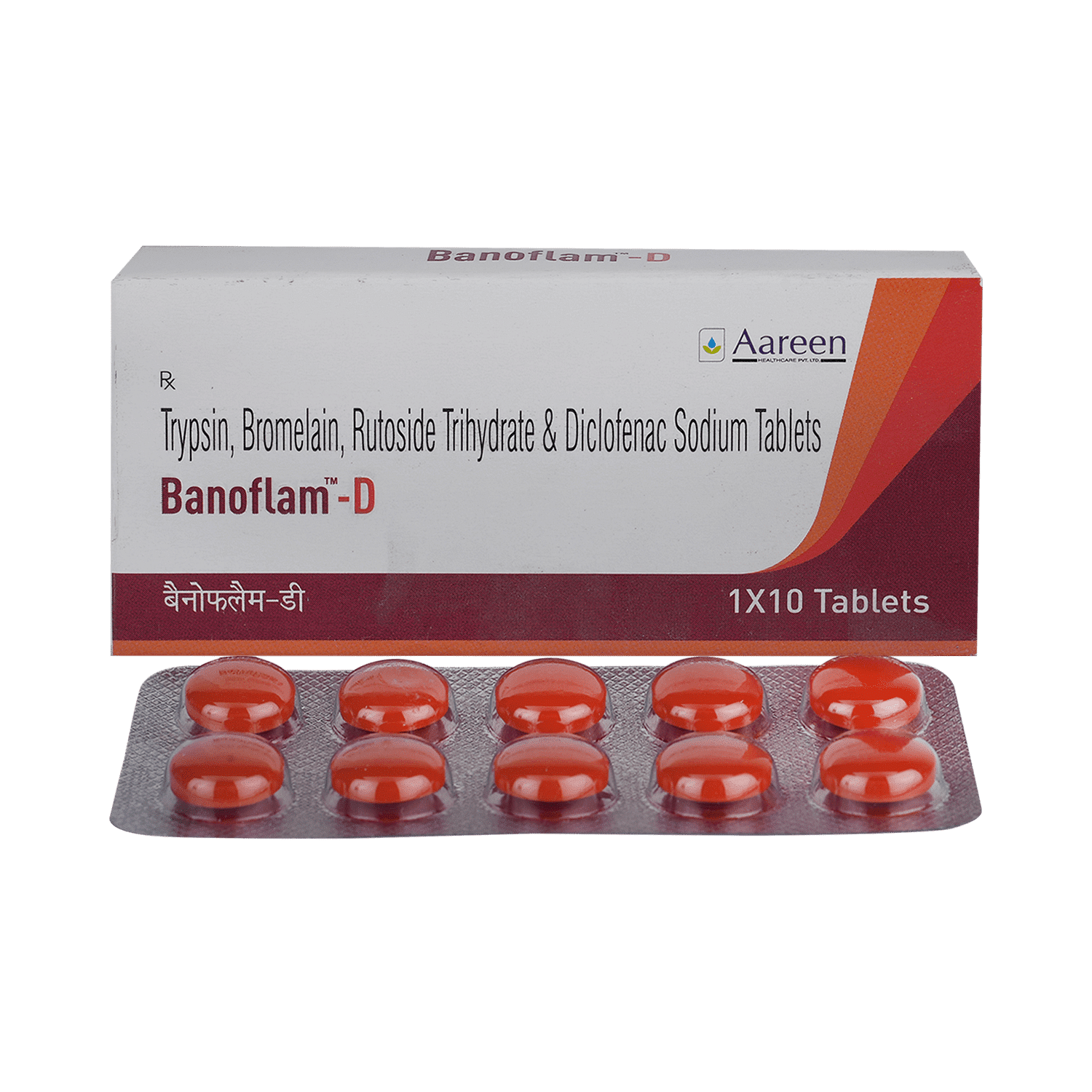
Banoflam-D Tablet
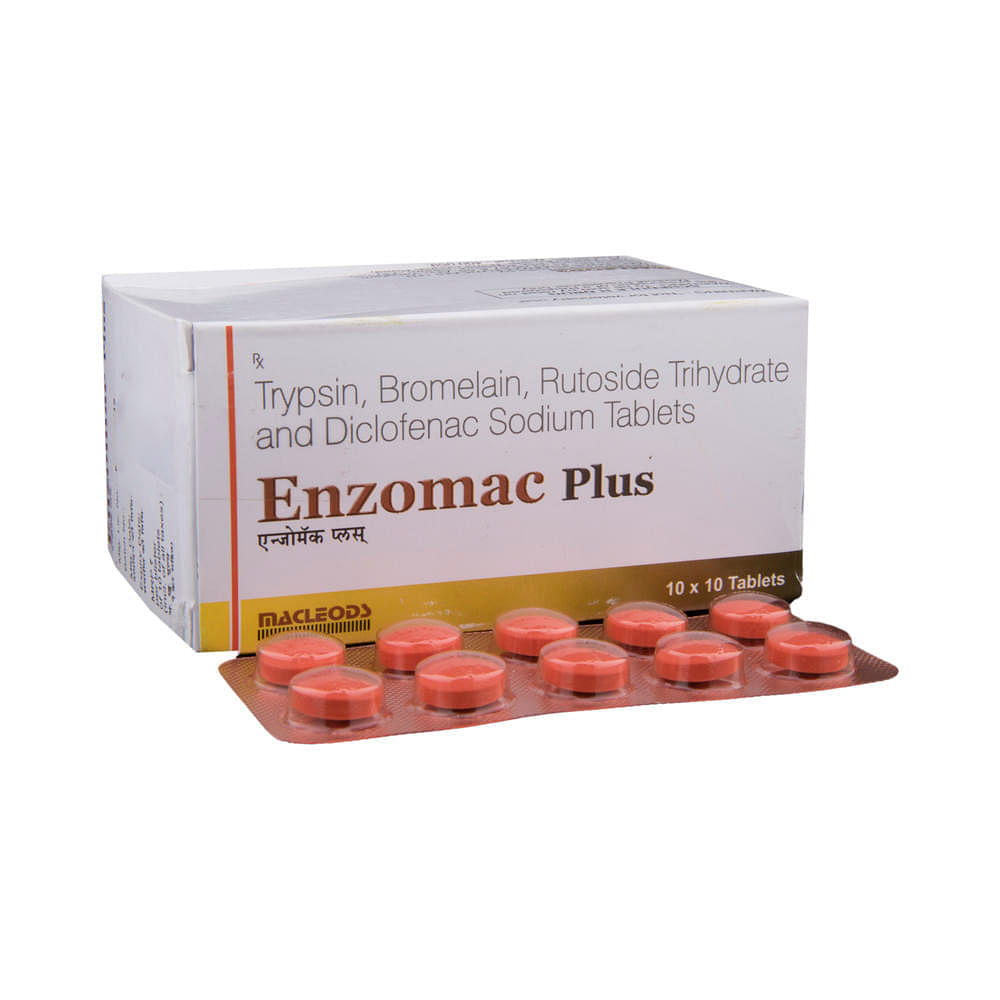
Enzomac Plus Tablet
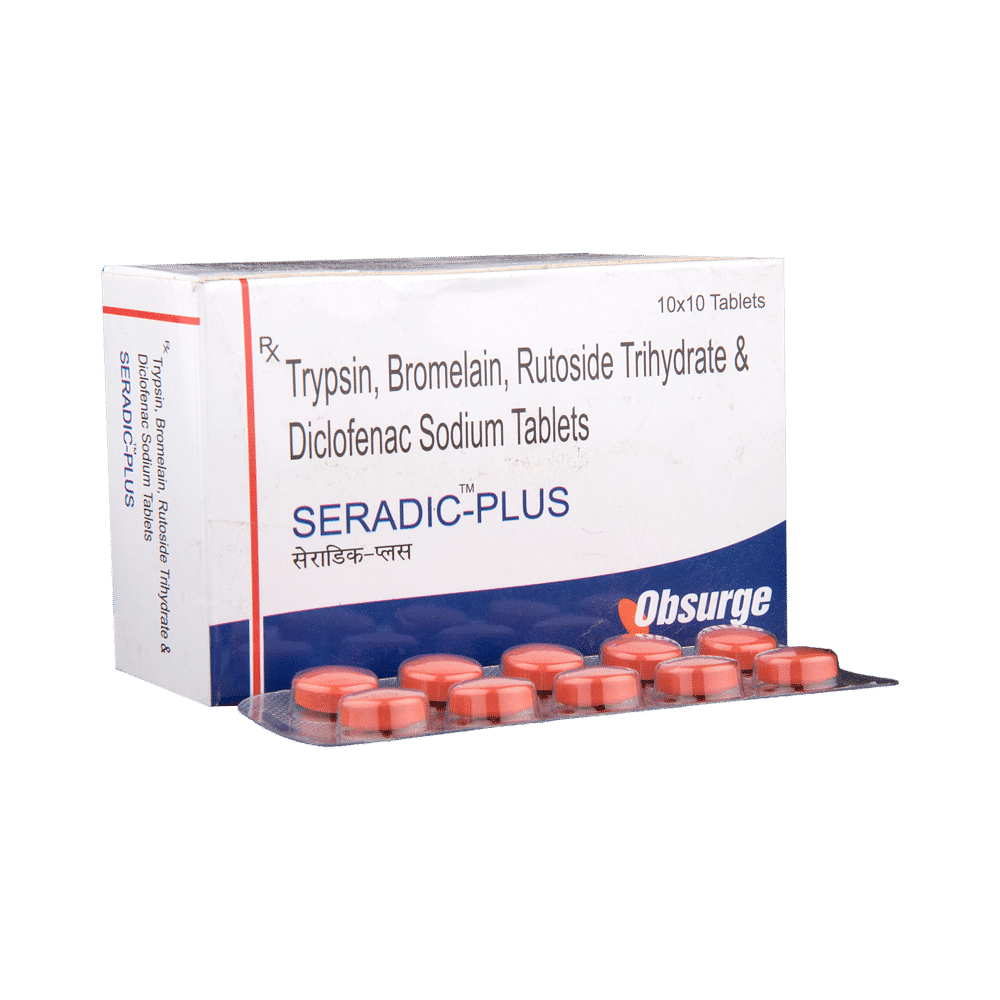
Seradic-Plus Tablet
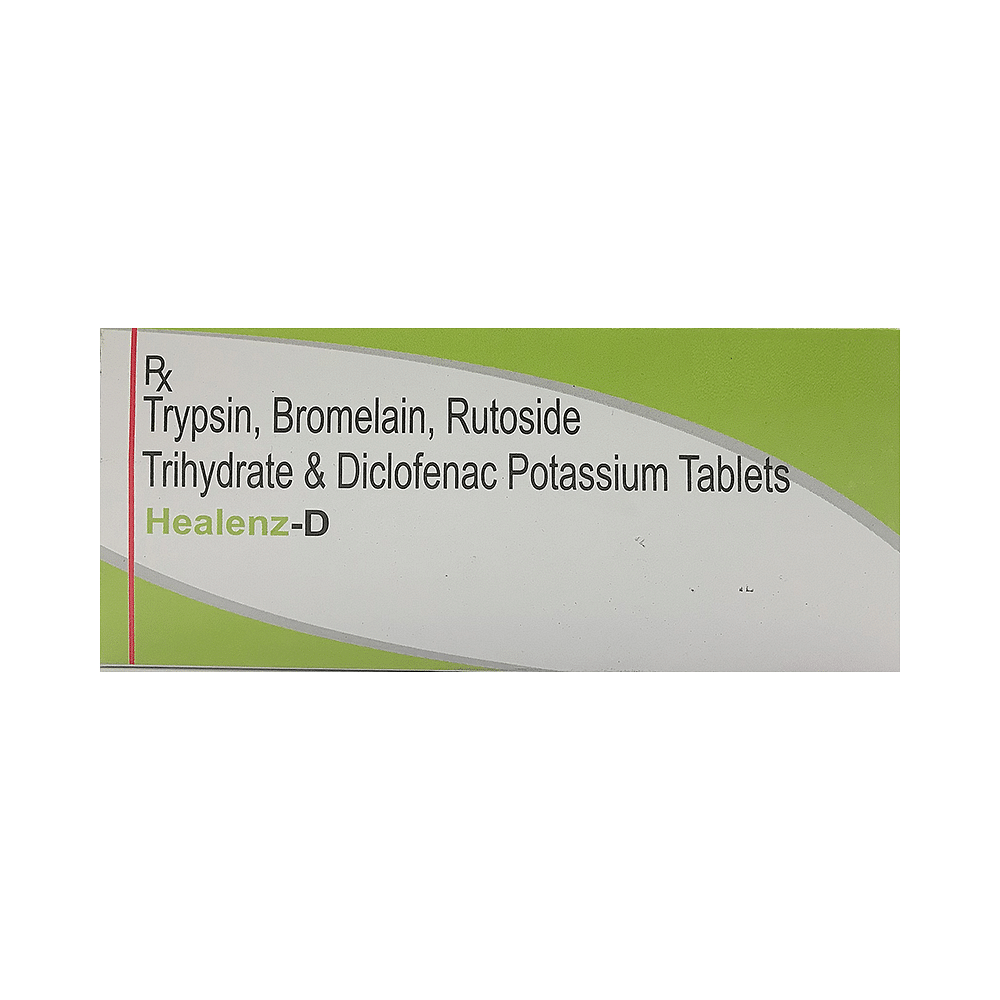
Healenz D Tablet
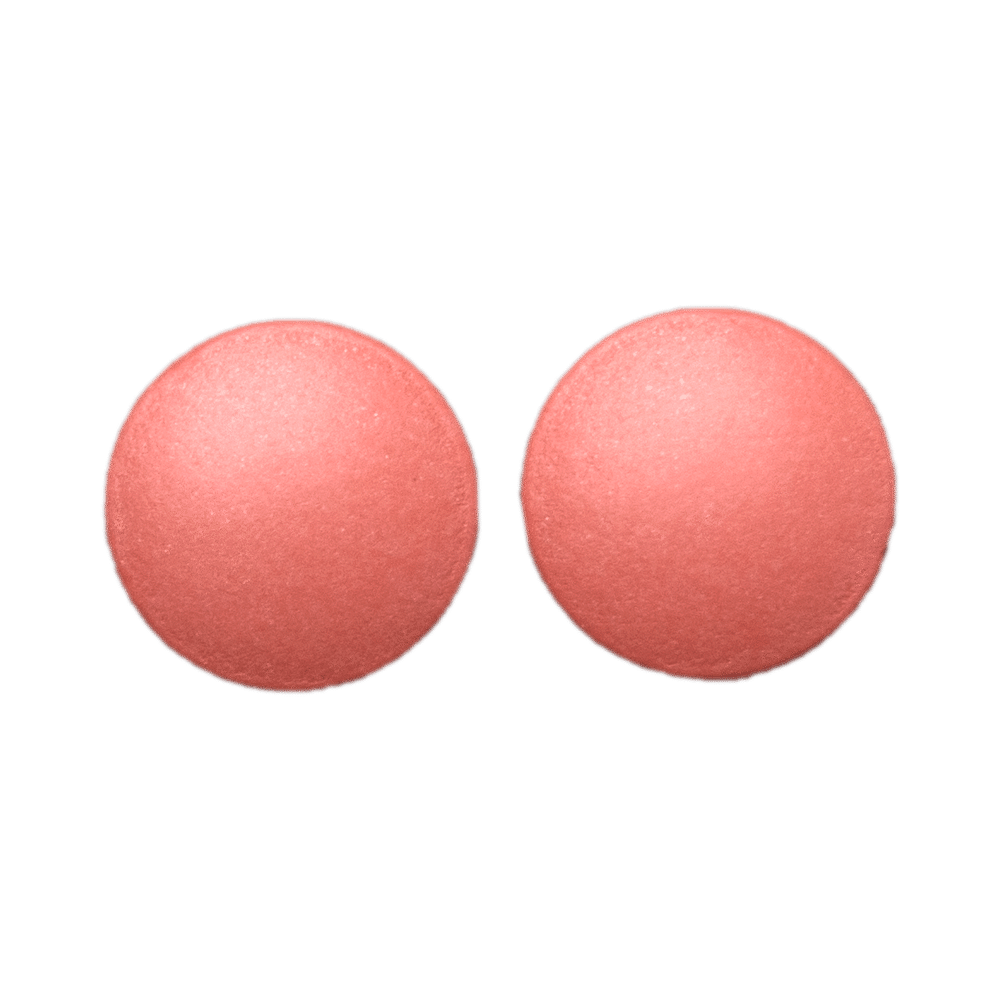
Rutoheal-D Tablet
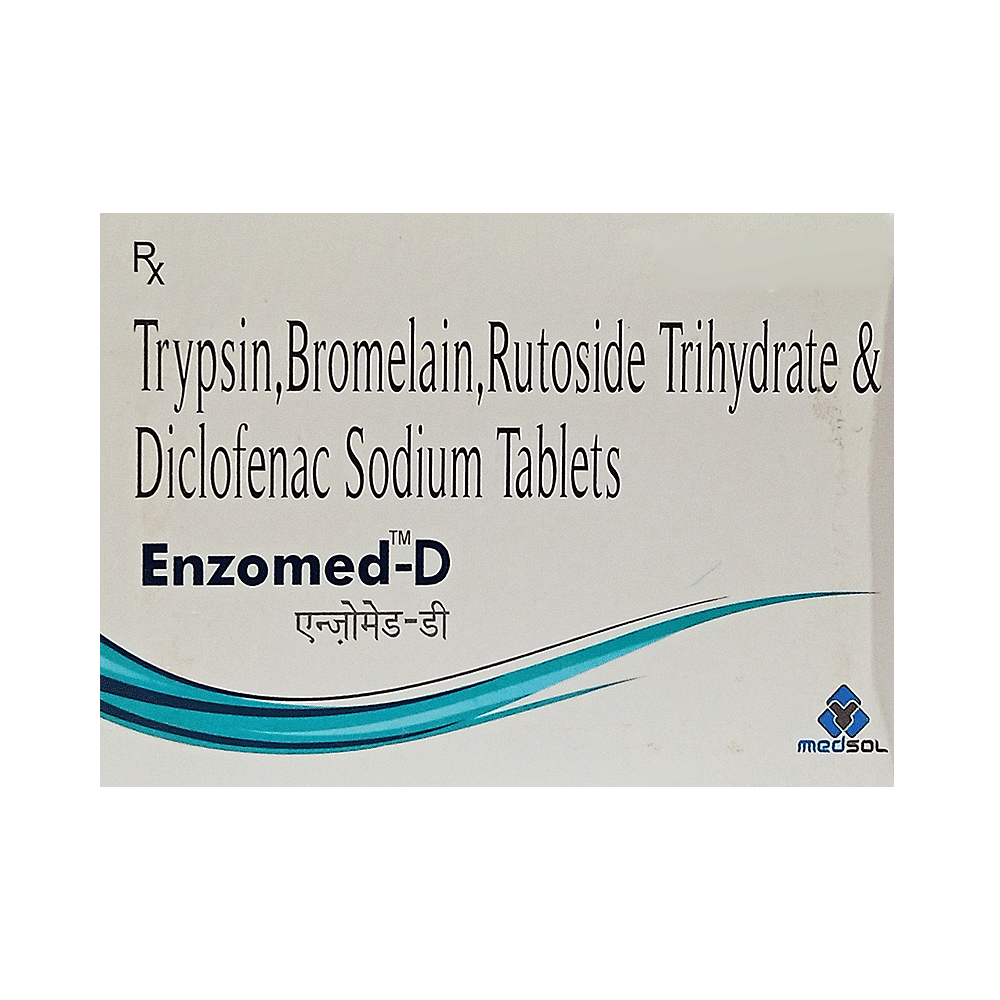
Enzomed-D Tablet
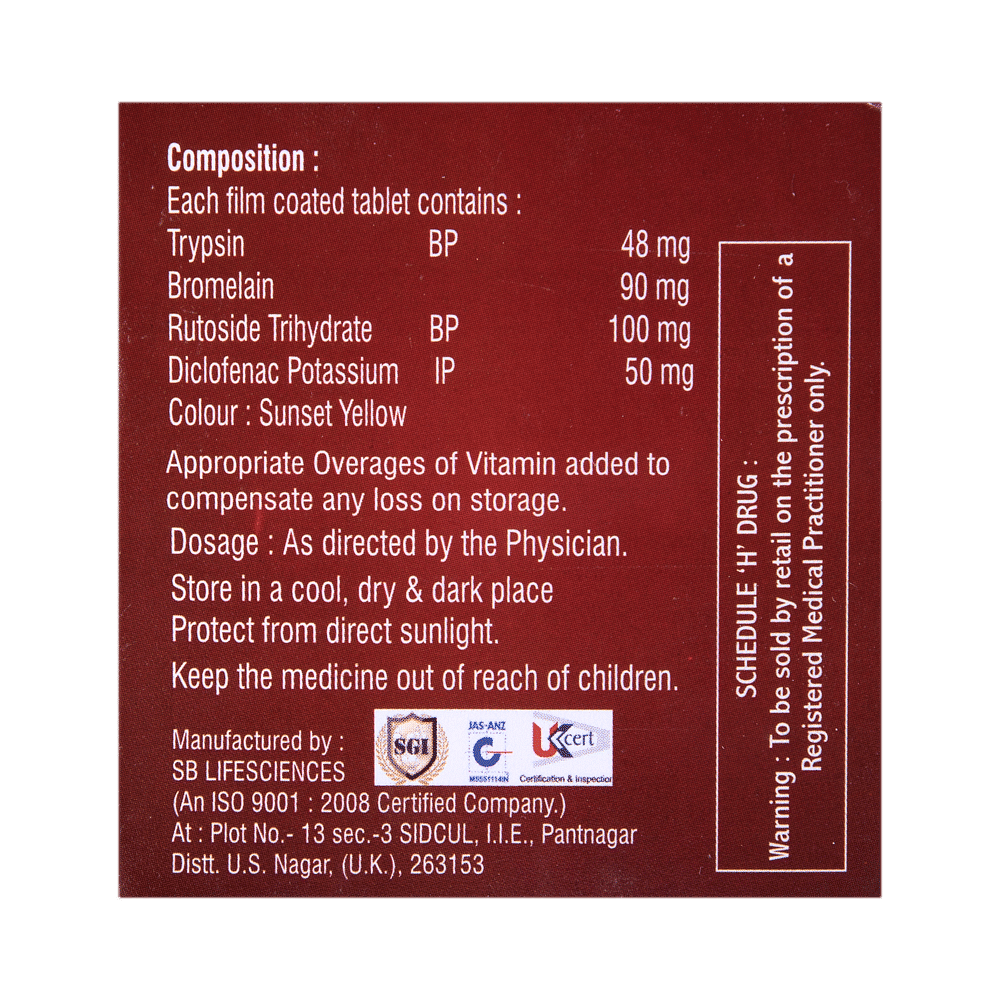
Ridezox-Forte Tablet

Trypozed D Tablet
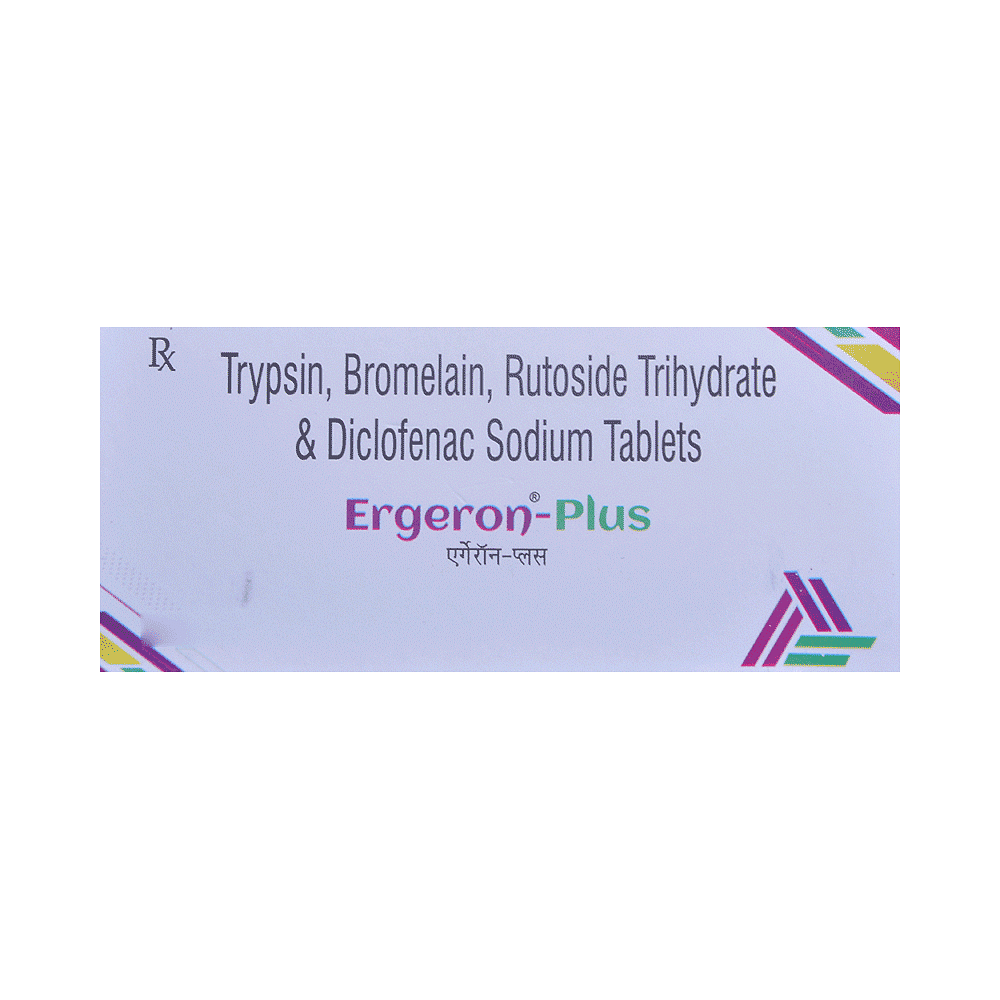
Ergeron-Plus Tablet
Frequently asked questions
What is Synotin D Tablet?
Synotin D Tablet contains Trypsin, Bromelain, Rutoside and Diclofenac. This combination helps manage pain and swelling (inflammation) by reducing the body's chemical substances that contribute to these symptoms.
Can Synotin D Tablet cause dizziness?
Yes, some patients may experience dizziness (feeling faint, weak, unsteady or lightheaded) when using Synotin D Tablet. If you feel dizzy or lightheaded, it's advisable to rest and resume taking the medicine only when feeling better.
Are there any contraindications for using Synotin D Tablet?
Synotin D Tablet is not suitable for patients with known allergies to painkillers (NSAIDs) or any of its components or excipients. It's also not recommended in individuals with a history of stomach ulcers, active, recurrent stomach ulcer/bleeding. Additionally, avoiding Synotin D Tablet in patients with a history of heart failure, high blood pressure, and liver or kidney disease is crucial.
Can I take more than the recommended dose of Synotin D Tablet?
No, exceeding the recommended dose can increase the risk of side effects like nausea, vomiting, heartburn, indigestion, diarrhea, and potentially kidney damage. If your pain or swelling is not relieved by the prescribed dosage, consult your doctor for a re-evaluation.
What are the recommended storage conditions for Synotin D Tablet?
Store this medication in its original container, tightly closed, and according to the instructions on the packaging. Ensure that unused medicine is not consumed by pets, children, or others.
When can I stop taking Synotin D Tablet after my pain and swelling (inflammation) are relieved?
Usually, Synotin D Tablet is used for a short period. It can be discontinued once your symptoms improve, but if your doctor has advised otherwise, continue taking the medicine as directed.
Can Synotin D Tablet cause nausea and vomiting?
Yes, some people might experience nausea and vomiting after using Synotin D Tablet. Consuming it with milk, food, or antacids may help alleviate this side effect. Avoid fatty or fried foods while taking the medication. In case of vomiting, drink fluids in small frequent sips. If symptoms persist, seek medical advice, looking for signs of dehydration such as dark-colored and strong-smelling urine, and low urination frequency. Never take any other medicine without consulting your doctor.


